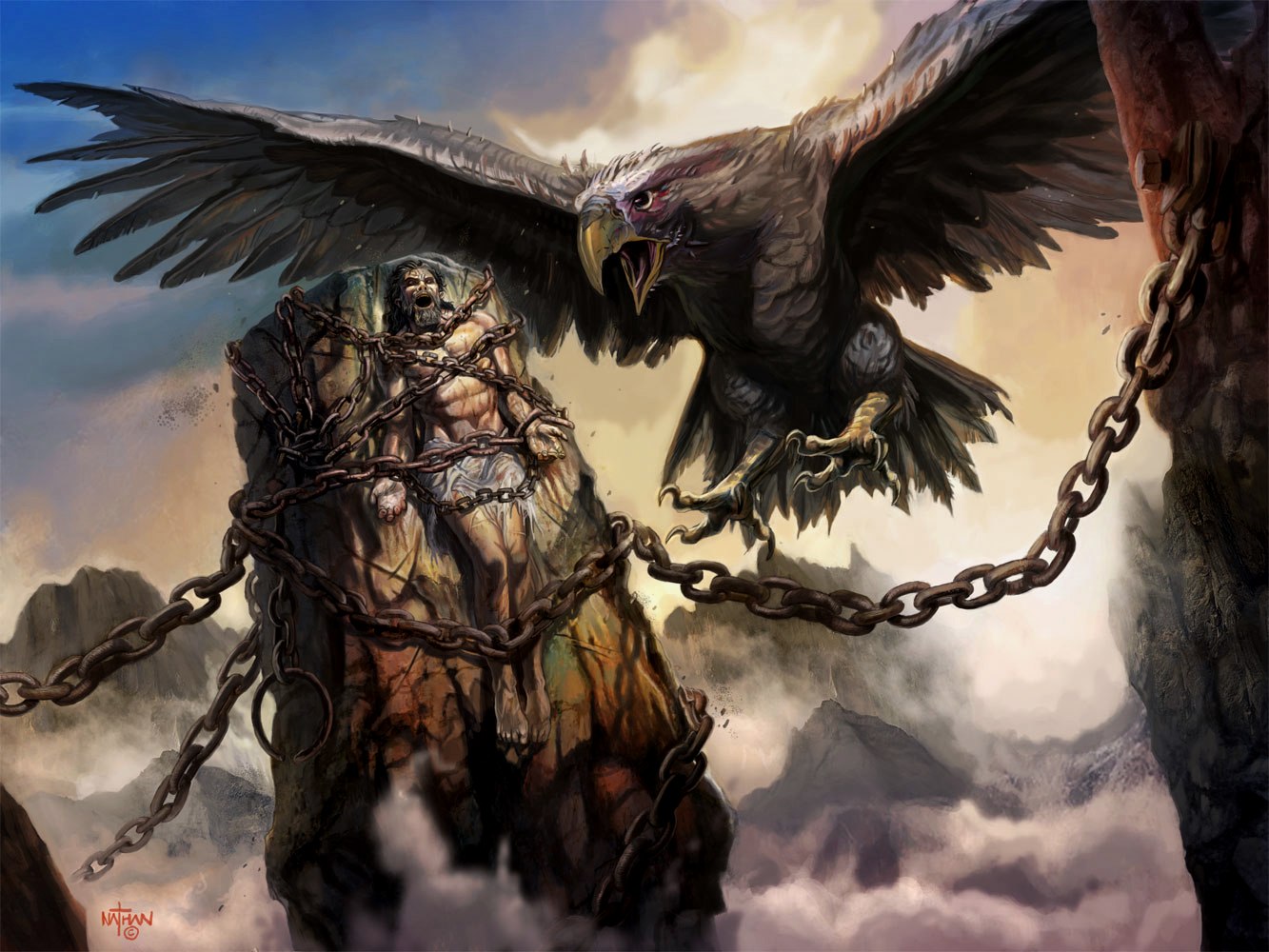Difference between revisions of "Eagle (giant)"
Tao alexis (talk | contribs) |
Tao alexis (talk | contribs) |
||
| Line 20: | Line 20: | ||
'''Giant eagles''' are majestic and powerful [[Birds (sage study)|birds]] of enormous size. They have none of the sentience ascribed to such creatures by J.R.R. Tolkein's literature. Their wingspan can reach up to 20 feet or more, allowing them to soar at great heights while scanning the terrain below for food. As aerial predatores, they have large, vicious talons, and a beak that's well able to tear a full-grown humanoid apart with one bite. | '''Giant eagles''' are majestic and powerful [[Birds (sage study)|birds]] of enormous size. They have none of the sentience ascribed to such creatures by J.R.R. Tolkein's literature. Their wingspan can reach up to 20 feet or more, allowing them to soar at great heights while scanning the terrain below for food. As aerial predatores, they have large, vicious talons, and a beak that's well able to tear a full-grown humanoid apart with one bite. | ||
| − | [[File:Giant Eagle.jpg|left|350px|thumb]] | + | [[File:Giant Eagle.jpg|left|350px|thumb|In some parts of the world, criminals are sometimes staked out for eagles to consume.]] |
__TOC__ | __TOC__ | ||
They dwell in remote, high places such as mountain peaks, cliffs, or other hard-to-reach locations. In these places they build massive nests, where sometimes live prey is brought to feed the eagle's young. They travel great distances in a day, so that one giant eagle might patrol hundreds of square miles of territory. If nesting on the edges of rural communities, they're viewed as a pest — and as such, any hunter willing to undertake the difficult task of tracking the creature back to its lair is greatly desired. | They dwell in remote, high places such as mountain peaks, cliffs, or other hard-to-reach locations. In these places they build massive nests, where sometimes live prey is brought to feed the eagle's young. They travel great distances in a day, so that one giant eagle might patrol hundreds of square miles of territory. If nesting on the edges of rural communities, they're viewed as a pest — and as such, any hunter willing to undertake the difficult task of tracking the creature back to its lair is greatly desired. | ||
Revision as of 19:22, 1 November 2023
| Species | avian |
| No. Appearing | 1–10 |
| Behaviour | solitary |
| Range | alpine, barrens, desert, savanna, steppe, veldt |
| Size | 9 ft. body; 20 ft. wingspan |
| Weight | 274 lbs. |
| Intelligence | 2 |
| Armour Class | 7 |
| Hit Dice | 4 |
| Action Points | 12 |
| Max. Stride | 18 |
| THAC0 | 18 |
| Hp/Die | d8 |
| Attack Forms | 3: two talons; beak |
| Damage | talons (2-12); beak (4-14) |
| Special Attacks | diving |
Giant eagles are majestic and powerful birds of enormous size. They have none of the sentience ascribed to such creatures by J.R.R. Tolkein's literature. Their wingspan can reach up to 20 feet or more, allowing them to soar at great heights while scanning the terrain below for food. As aerial predatores, they have large, vicious talons, and a beak that's well able to tear a full-grown humanoid apart with one bite.
Contents
They dwell in remote, high places such as mountain peaks, cliffs, or other hard-to-reach locations. In these places they build massive nests, where sometimes live prey is brought to feed the eagle's young. They travel great distances in a day, so that one giant eagle might patrol hundreds of square miles of territory. If nesting on the edges of rural communities, they're viewed as a pest — and as such, any hunter willing to undertake the difficult task of tracking the creature back to its lair is greatly desired.
Behaviour
Their preferred prey include large game such as caribou and elk, and these creatures have been known to hunt moose, buffalo and bears, and in sub-tropical climates most anything on four legs. Human-bred livestock, particularly horses, are favourites as well. Eagles may hunt fish in the sea, especially in areas where tunny or large cod run.
Nests can be tens of feet in diameter and are often deep enough to climbing out would be a challenge; such has been made from branches two or three inches in diameter, ripped from trees and moderately stripped of their leaves. A giant eagle's egg weighs about a hundred pounds, with the size of a medium-sized sheep. Usually two to four eggs are laid in the late winter to spring, hatching in the early summer.
When hunting prey on the ground, giant eagles usually make only one pass; if not successful, or if stunned, the eagle will carry on and seek easier food elsewhere.
Advantages
Diving. Giant eagles are able to drop from the sky with terrifying alacrity, surprising even those who have observed the eagle on high with a 2 in 6 chance, if they're not hunched down and keeping watch. Those not surprised may roll initiative, understanding that the eagle gets +2 on initiative rolls. A success by the defender allows attacking the eagle first with a missile or melee weapon. Alternately, an attacked defender may leap into the shelter of rocks or a building, if such cover is within 10 ft.
- On their attack when diving, the giant eagle adds +4 to it's to hit roll. If the eagle hits with both claws, and stuns the intended victim, the latter is gripped tight and carried off at a terrifying speed, to the giant eagle's lair. There, the victim is released in the lair to be finished off by the eagle — or the eagle's chicks with the eagle's help.
See Bestiary
